Capybaras are primarily herbivores, relying on a diet rich in grasses and water plants. An adult capybara can consume 6-8 pounds of grass per day. During the dry season, when fresh grasses and water plants are scarce, they adapt by eating reeds, grains, melons, and squashes. Remarkably, they practice cecotrophy (re-eating their feces) to ensure no nutrient goes to waste in their efficient, nature-honed dietary cycle.
What do Capybaras Eat
Grazing and Aquatic Plants
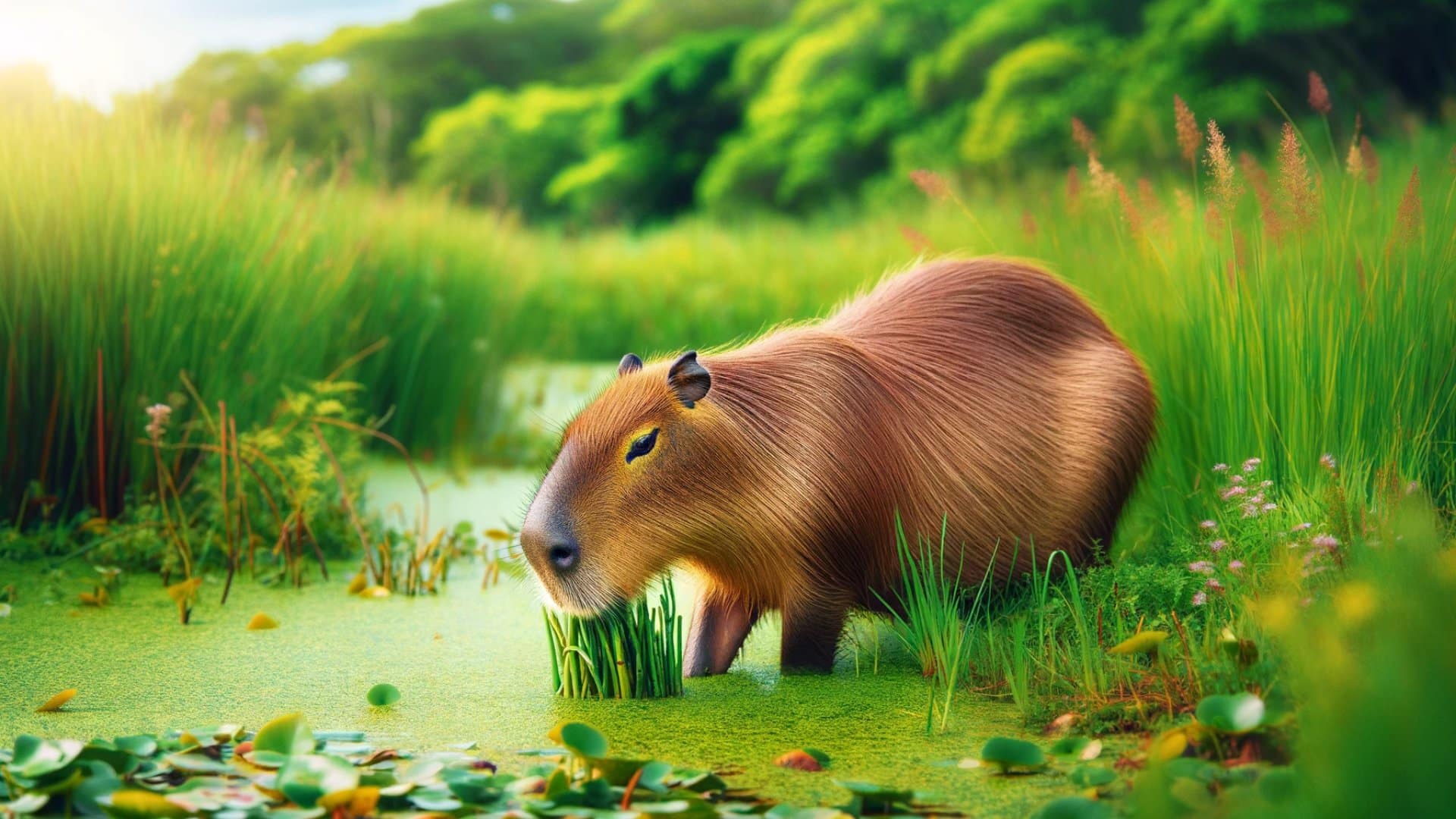
Capybaras, the gentle giants of South American waterways, are known for their grazing habits, primarily feeding on grass and aquatic plants. Picture them, if you will, in the golden light of dawn, peacefully nibbling on the verdant riverbanks. They possess long, sharp teeth, perfectly adapted for their diet, which grow continuously and thus necessitate constant grazing to prevent overgrowth. While we discuss their gentle grazing habits, you might wonder, are capybaras friendly or dangerous?
Adaptation to Seasons
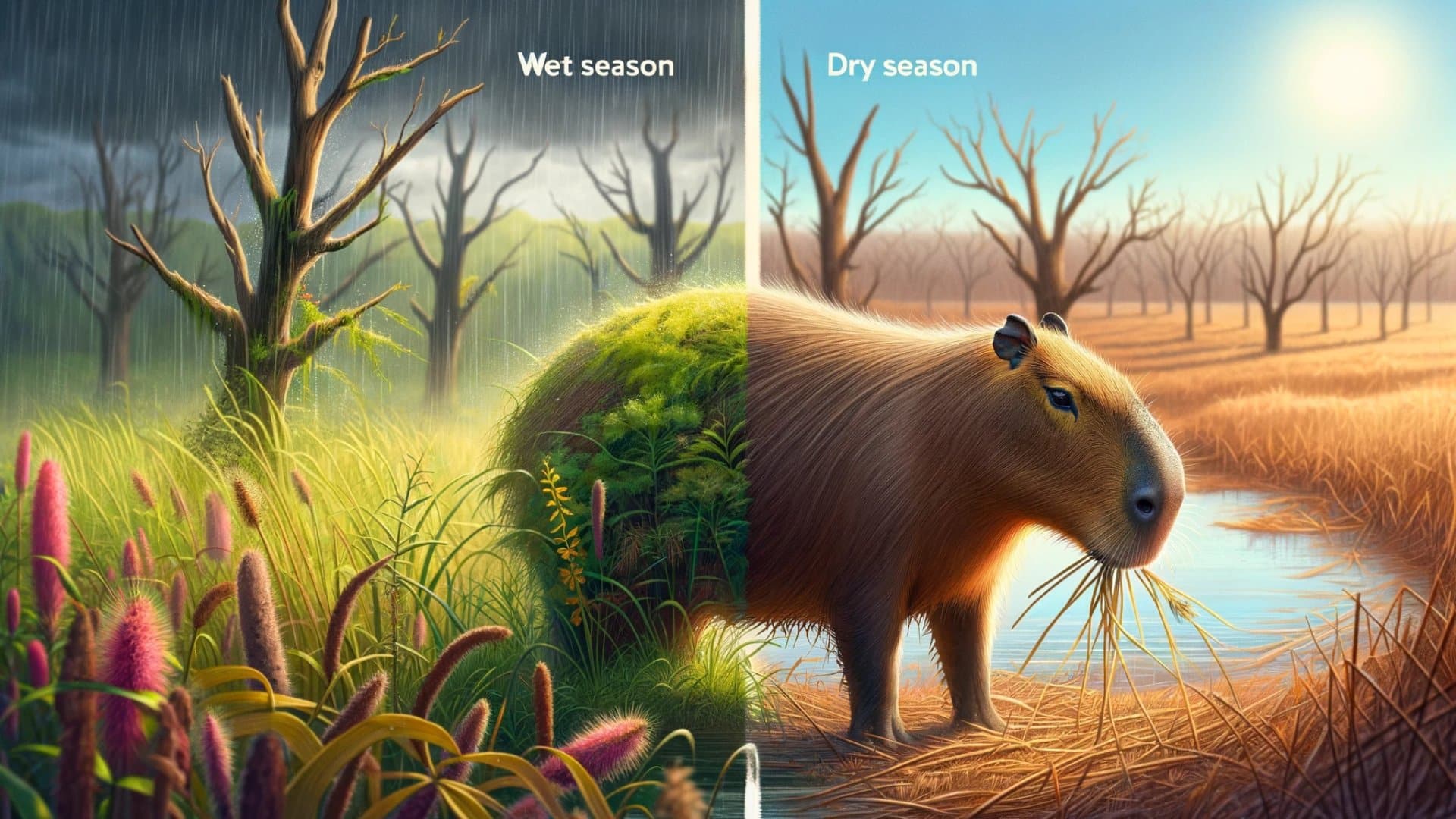
Like characters in a story adapting to their challenges, capybaras modify their diet with the changing seasons. In the lush wet season, they are selective gourmets, preferring palatable grasses. Conversely, the dry season sees them as opportunistic foragers, less choosy due to the scarcity of resources. In addition to dietary adaptations, capybaras also possess physical adaptations for survival. For instance, their speed is crucial when escaping predators.
Unusual Eating Habits
Intriguingly, capybaras practice cecotrophy, a habit akin to a plot twist in their dietary narrative. By consuming their own feces in the morning, they re-ingest the products of internal bacterial fermentation, thereby enhancing nutrient absorption – a crucial survival strategy.
Dietary Variety
Fruits and Vegetables
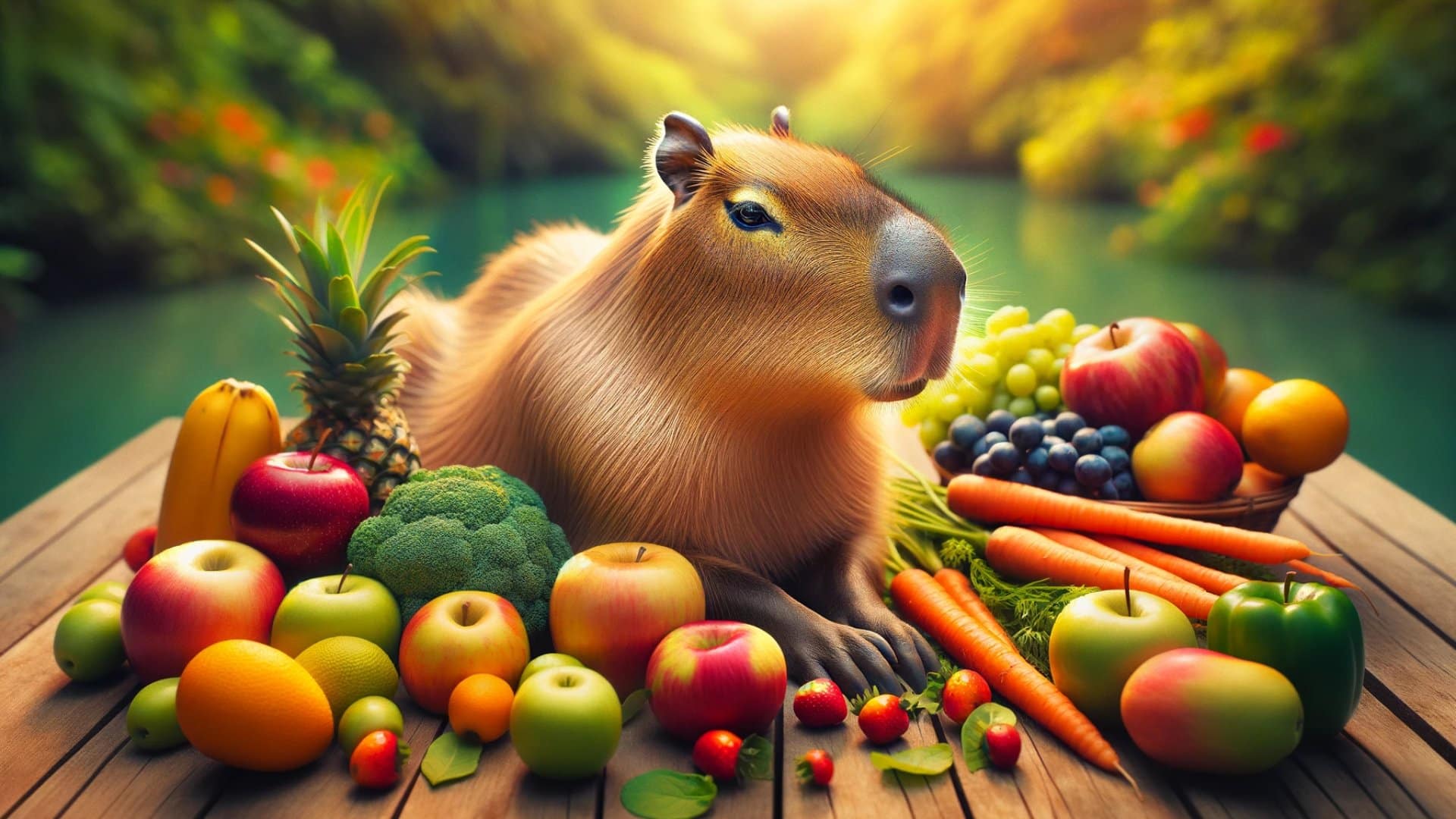
Beyond grass, capybaras enjoy nature’s bounty of fruits and vegetables, which provide essential vitamins and minerals. However, just as a balanced story needs variety, their fruit intake should be moderated due to sugar content. While exploring the diverse diet of capybaras, it’s interesting to consider how this might vary in rare types like the Albino Capybara.
Berries and Other Foods
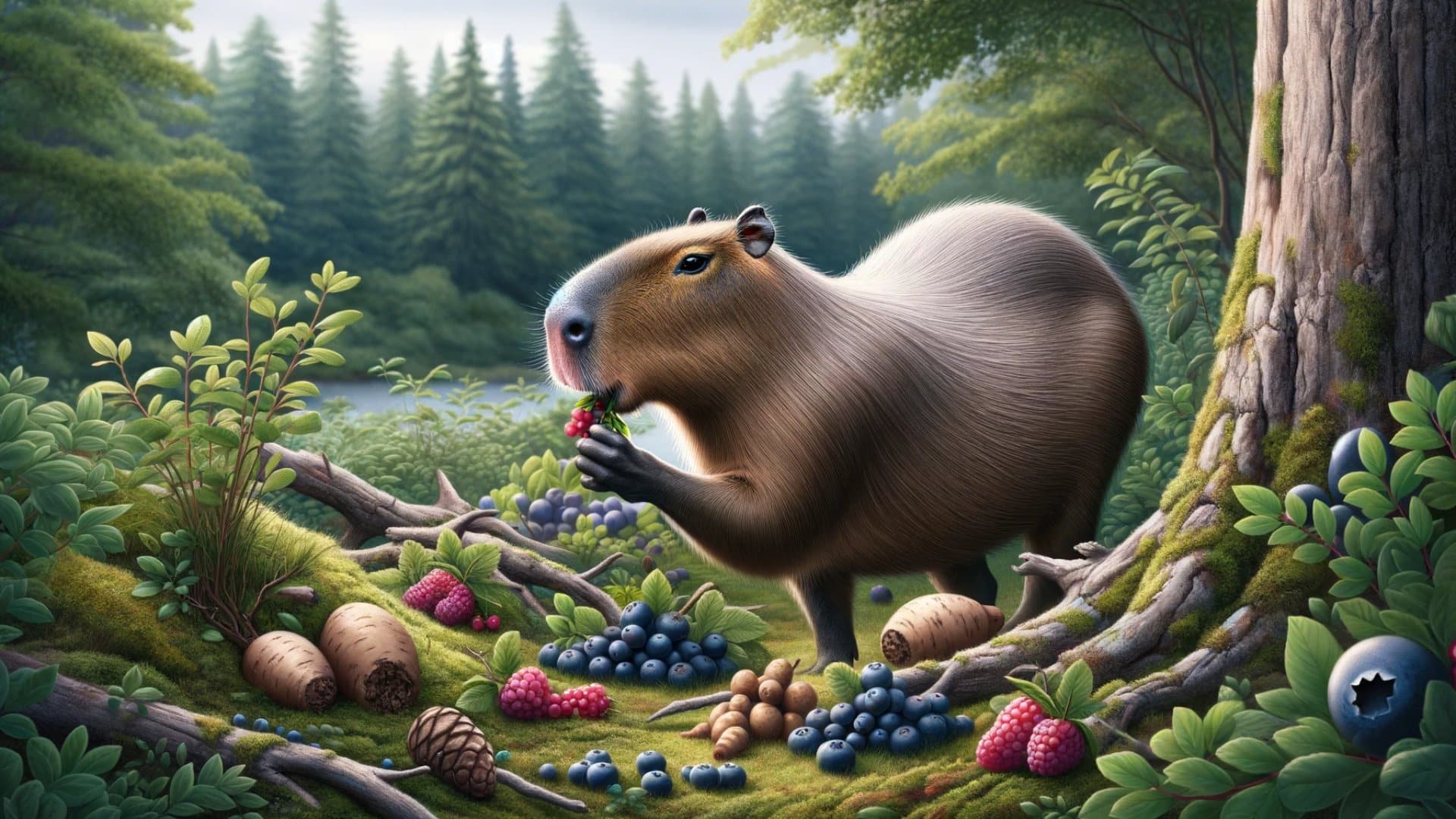
Berries, rich in antioxidants and vitamins, are another chapter in their diverse diet. Their ability to eat barks and tubers is a testament to their robust dental capabilities, demonstrating nature’s remarkable design.
What Not to Feed Capybaras
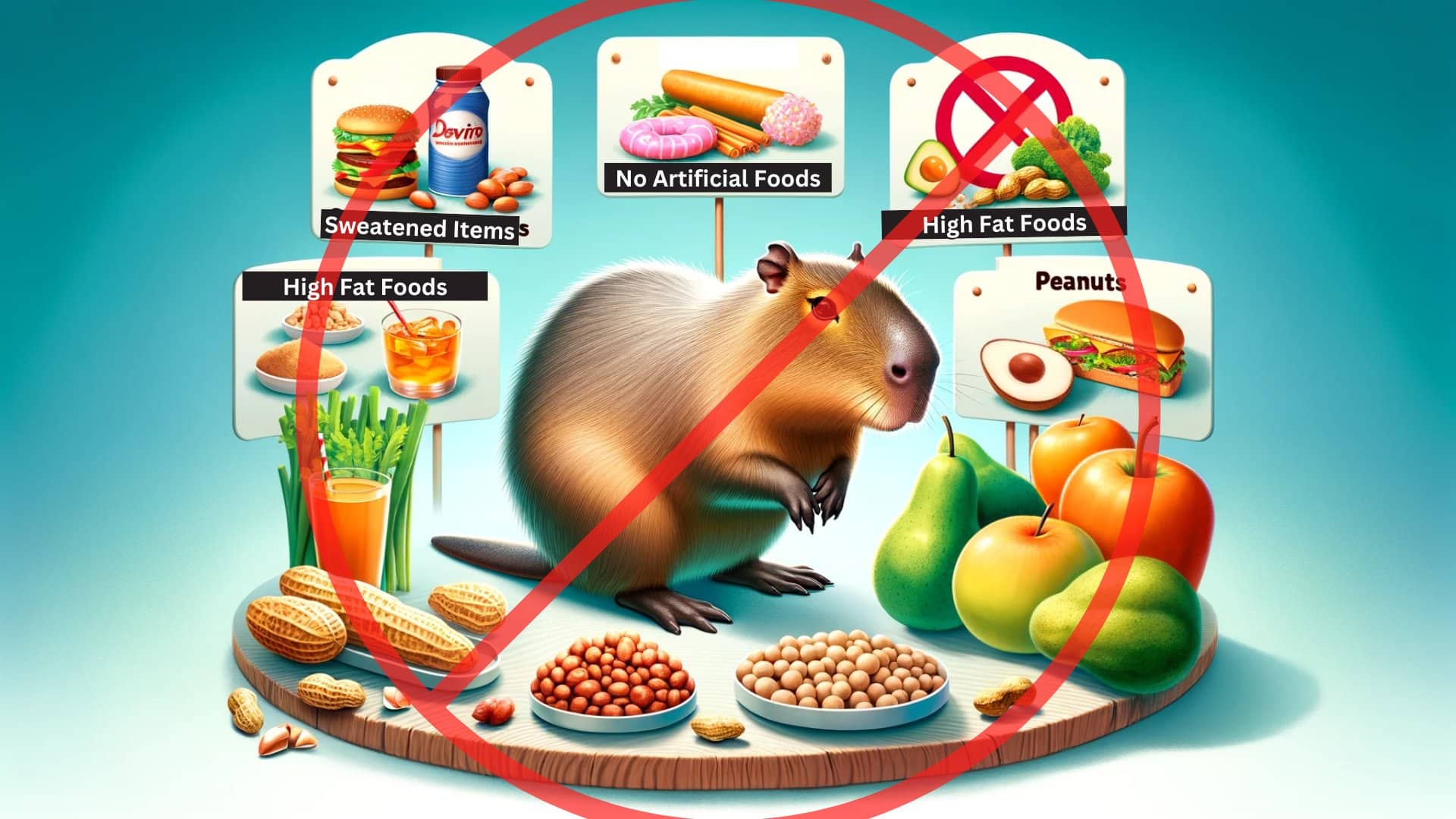
When caring for these creatures, it’s crucial to avoid certain foods. Sweetened items, artificial flavors, or high-fat foods like peanuts are the antagonists in the capybara dietary tale. Soft foods also pose a threat, as they can lead to dental issues, disrupting the harmony of their well-adapted feeding habits. To understand these eating habits in the context of their overall behavior, explore more comprehensive capybara facts.
Capybaras in the Wild vs. Captivity
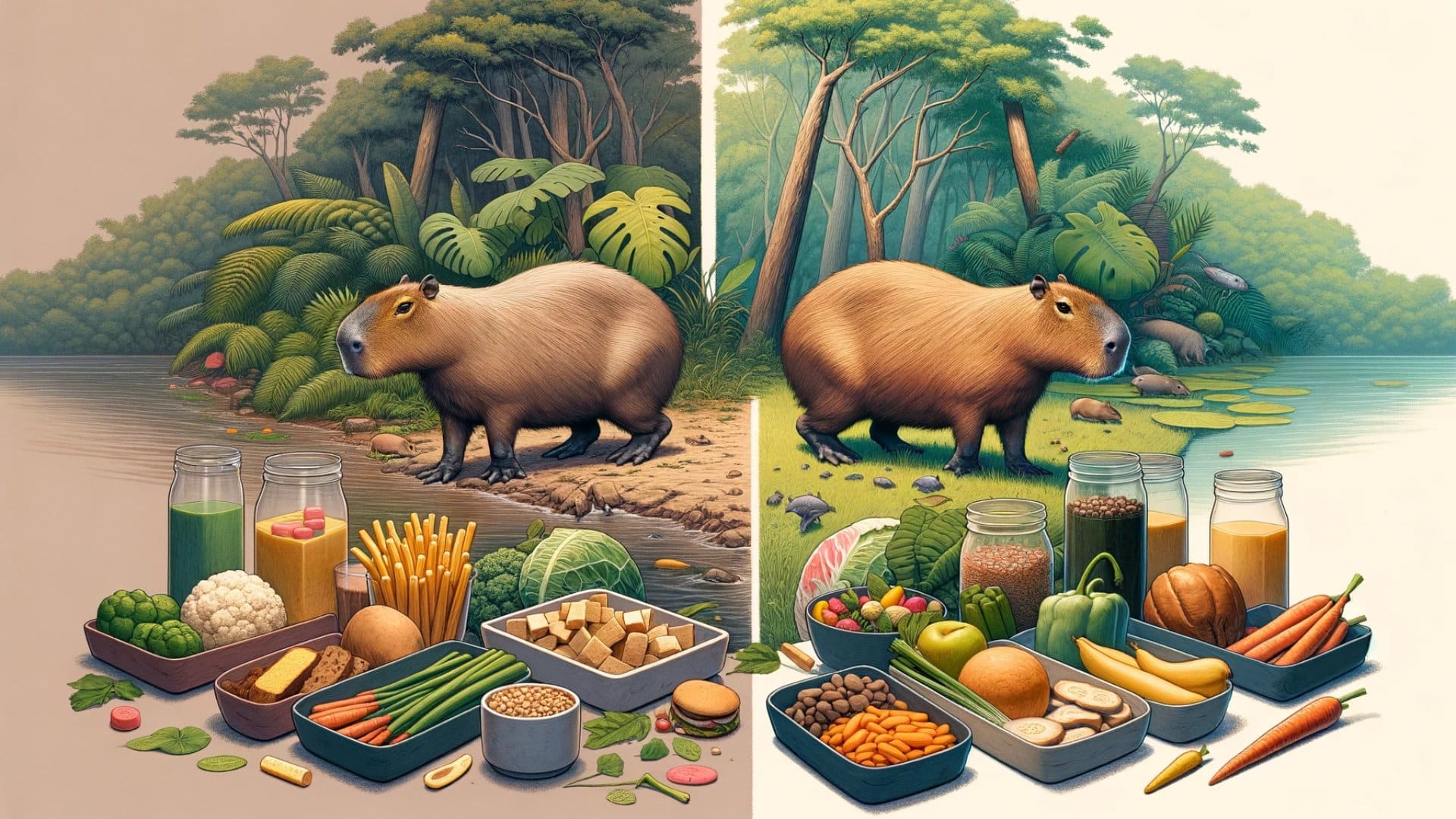
In the wild, capybaras’ diet is naturally regulated by their environment, a perfect balance authored by nature itself. In captivity, however, their diet must be carefully managed, akin to a carefully crafted story, to mimic natural feeding as closely as possible and ensure they receive all necessary nutrients without the risks associated with inappropriate foods. In their natural habitat, capybaras must be cautious of predators such as crocodiles and alligators.
Conclusion
Understanding the dietary habits of capybaras offers more than just insight into their biology; it’s a narrative about adaptation, survival, and the intricate balance of ecosystems. Their diet reflects their unique role in both land and aquatic environments and underscores the importance of informed, respectful care for these remarkable animals in captivity. This knowledge not only enhances our understanding of capybaras but also serves as a reminder of our responsibility to all creatures with whom we share our planet. While learning about their eating habits, you might also be curious about other aspects of their behavior, such as whether they can be potty trained. It’s definitely something worth reading up on.



